This distinctive Art Deco-style building, in Victoria Road, was built in 1933, as a car showroom for the Fairman family. There was also a large garage next door, which has since been demolished. The Fairmans had another garage, and an engineering works, in Station Road East. Fairman dovetailed running the business with Formula One grand prix racing, taking part in 12 races. His best season was in 1956, when he finished fourth in the British Grand Prix in a works Connaught. Jack Fairman died in 2002, aged 88, at a motor sport retirement home.
Prints of local shops.
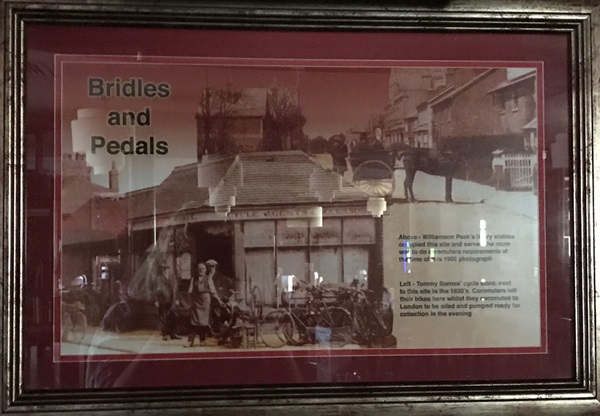
Above: Williamson Peak’s library stables occupied this site and served the more well to do commuters requirements at the time of this 1905 photograph.
Left: Tommy Barnes’ cycle store, next to this site in the 1920s. Commuters left their bikes here whilst they commuted to London to be oiled and pumped ready for collection in the evening.
Prints and text about Malcolm and Donald Campbell.
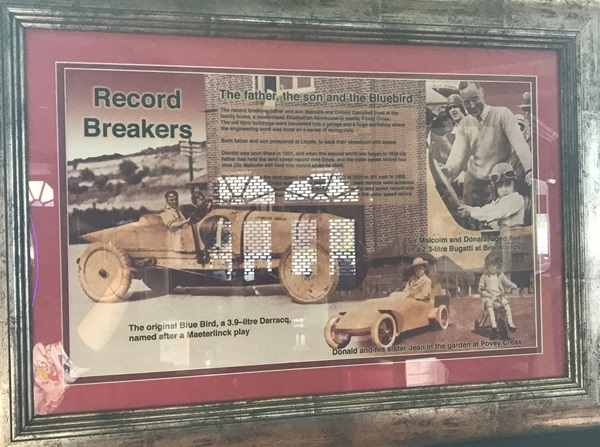
The text reads: The record breaking father and son Malcolm and Donald Campbell lived at the family home, a modernised Elizabethan farmhouse in nearby Povey Cross. The old farm buildings were converted into a garage and a huge workshop where the engineering work was done on a series of racing cars.
Both father and son prospered at Lloyds, to back their obsession with speed.
Donald was born there in 1921, and when the second world war began in 1939 his father had held the land speed record nine times, and the water speed record four times (Sir Malcolm still held this record when he died).
Prints and text about the Regent Cinema.
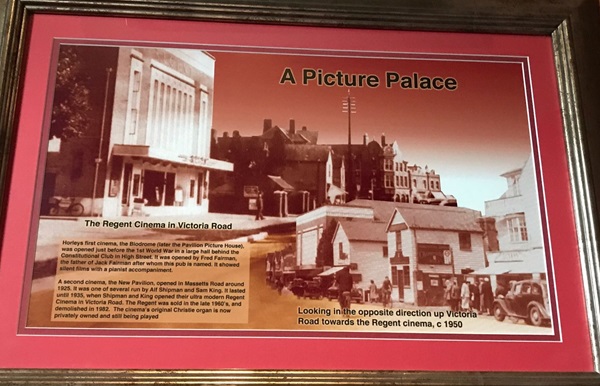
The text reads: Horley’s first cinema, the Biodrome (later the Pavilion Picture House), was opened just before the 1st World War in a large hall behind the Constitutional Club in High Street. It was opened by Fred Fairman, the father of Jack Fairman after whom this pub is named. It showed silent films with a pianist accompaniment.
A second cinema, the New Pavilion, opened in Massetts Road around 1925. It was one of several run by Alf Shipman and Sam King. It lasted until 1935, when Shipman and King opened their ultra-modern Regent Cinema in Victoria Road. The Regent was sold in the late 1960’s, and demolished in 1982. The cinema’s original Christie organ is now privately owned and still being played.
Above: Looking in the opposite direction up Victoria Road towards the Regent cinema, c1950.
Prints and text about the arrival of the railway.
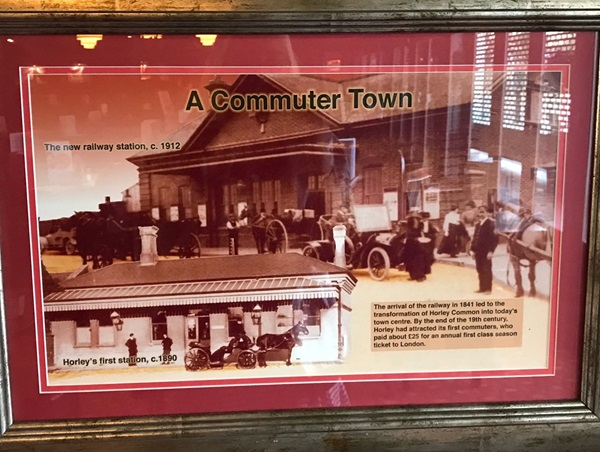
The text reads: The arrival of the railway in 1841 led to the transformation of Horley Common into today’s town centre. By the end of the 19th century, Horley had attracted its first commuters, who paid about £25 for an annual first class season ticket to London.
Above: The new Railway station, c1912
Left: Horley’s first station, c1890.
Prints and text about Blunden Shadbolt.
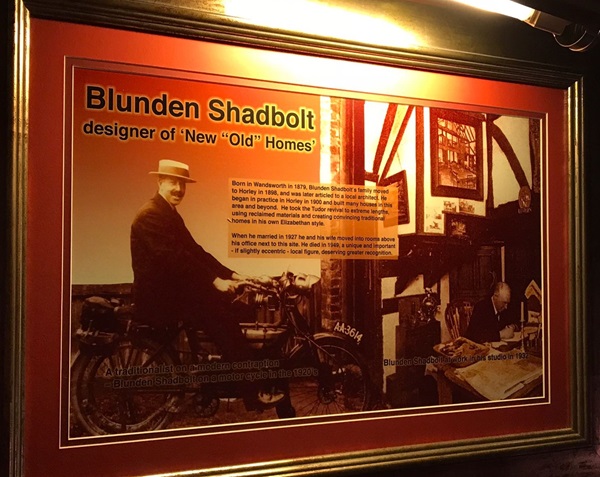
The text reads: Born in Wandsworth in 1879, Blunden Shadbolt’s family moved to Horley in 1898, and was later articled to a local architect. He began in practice in Horley in 1900 and built many houses in this area and beyond. He took the Tudor revival to extreme lengths, using reclaimed materials and creating convincing traditional homes in his own Elizabethan style.
When he married in 1927 he and his wife moved into rooms above his office next to this site. He died in 1949, a unique and important – if slightly eccentric – local figure, deserving greater recognition.
Text about Jack Fairman.
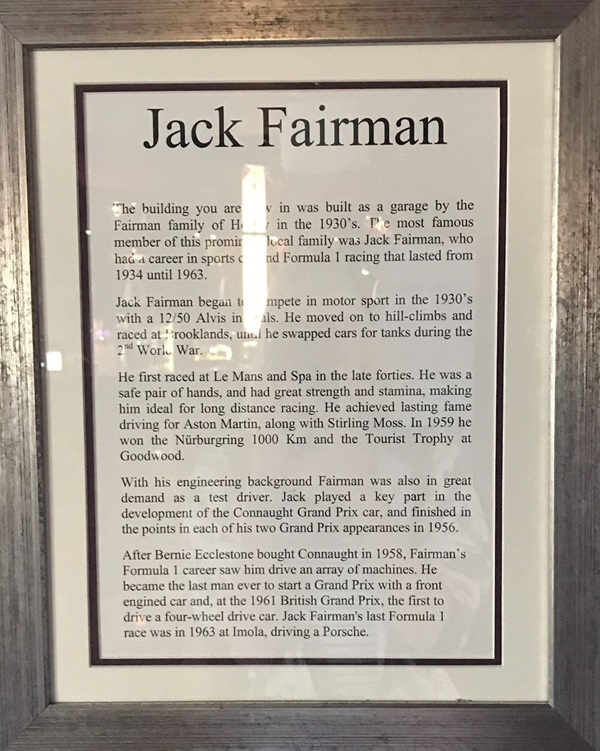
The text reads: The building you are now in was built as a garage by the Fairman family of Horley in the 1930s. The most famous member of this prominent family was Jack Fairman, who had a career in sports cars and Formula 1 racing that lasted from 1934 until 1963.
Jack Fairman began to compete in motor sport in the 1930s with a 12/50 Alvis in trials. He moved on to hill-climbs and raced at Brooklands, until he swapped cars for tanks during the 2nd World War.
He first raced at Le Mans and Spa in the late forties. He was a safe pair of hands, and had great strength and stamina, making him ideal for long distance racing. He achieved lasting frame driving for Aston Martin, along with Stirling Moss. In 1959 he won the Nurburging 1000km and the Tourist Trophy at Goodwood.
With his engineering background Fairman was also in great demand as a test driver. Jack played a key part in the development of the Connaught Grand Prix car, and finished in the points in each of his two Grand Prix appearances in 1956.
After Bernie Ecclestone bought Connaught in 1958, Fairman’s Formula 1 career saw him drive an array of machines. He became the last man ever to start a Grand Prix with a front engine car and, at the 1961 British Grand Prix, the first to drive a four-wheel drive car. Jack Fairman’s last Formula 1 race was in 1963 at Imola, driving a Porsche.
A photograph of Jack Fairman in the Ferguson-Climax P99 4-wheel-drive, in the 1961 British Grand Prix at Aintree.
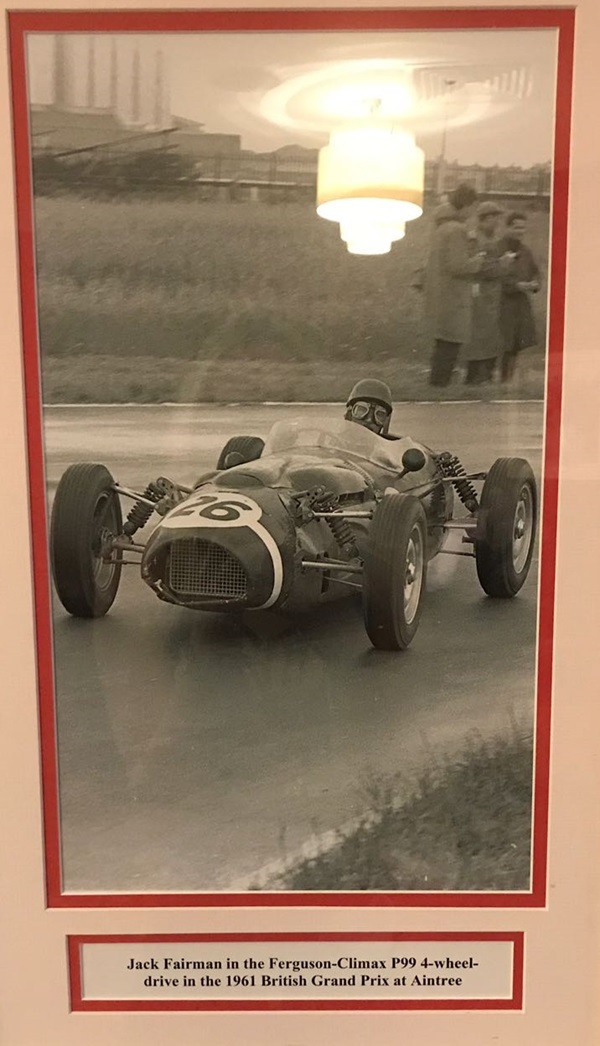
Prints and text about Fairman’s Garage.
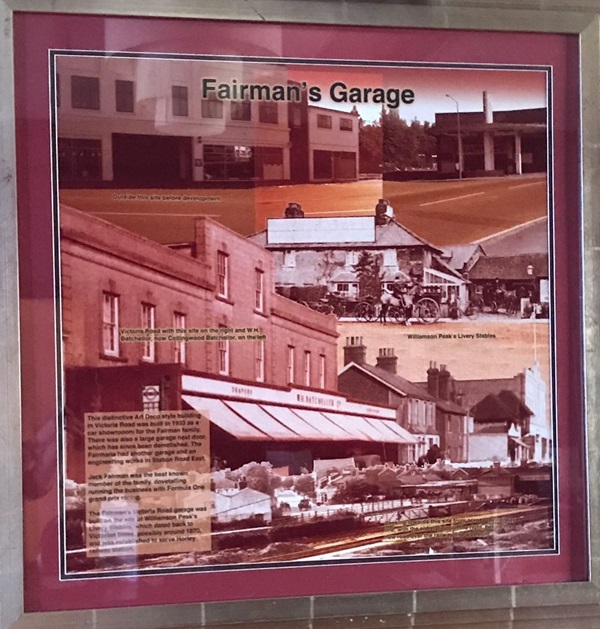
The text reads: This distinctive Art Deco style building in Victoria Road was built in 1933 as a car showroom for the Fairman family. There was also a large garage next door, which has since been demolished. The Fairman’s had another garage and an engineering works in Station Road East.
Jack Fairman was the best known member of the family, dovetailing running the business with Formula One grand prix racing.
The Fairman’s Victoria Road garage was built on the site of Williamson Peak’s Livery Stables, which dated back to Victoria times, possibly around 1870, and was established to serve Horley railway station.
A photograph of the 1956 British Grand Prix at Silverstone: Jack Fairman in the Formula 1 Connaught B-Type.
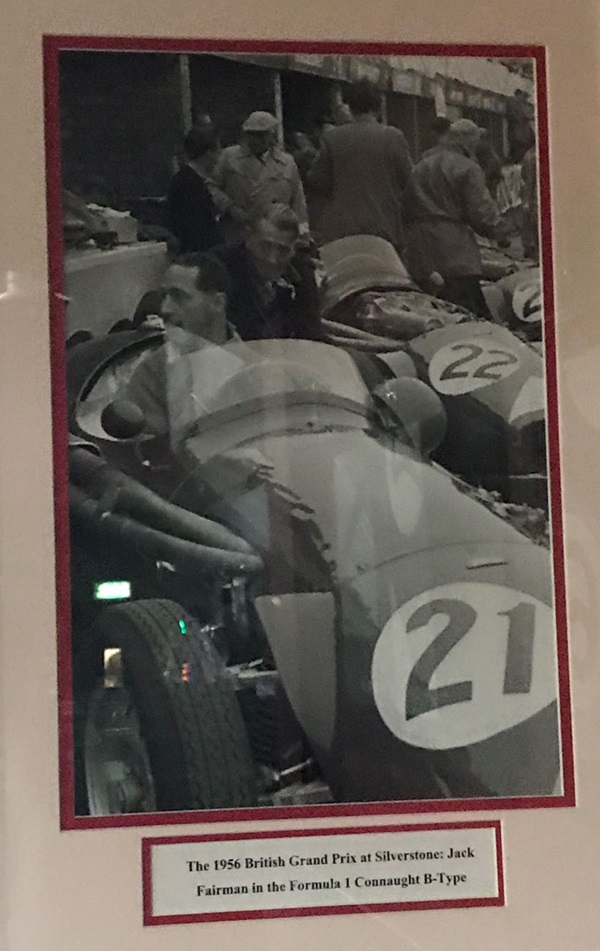
Extract from Wetherspoon News Summer 2019.
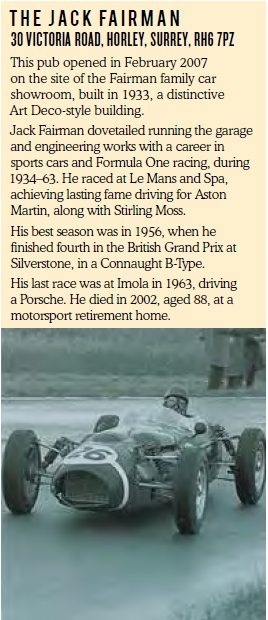
If you have information on the history of this pub, then we’d like you to share it with us. Please e-mail all information to: pubhistories@jdwetherspoon.co.uk